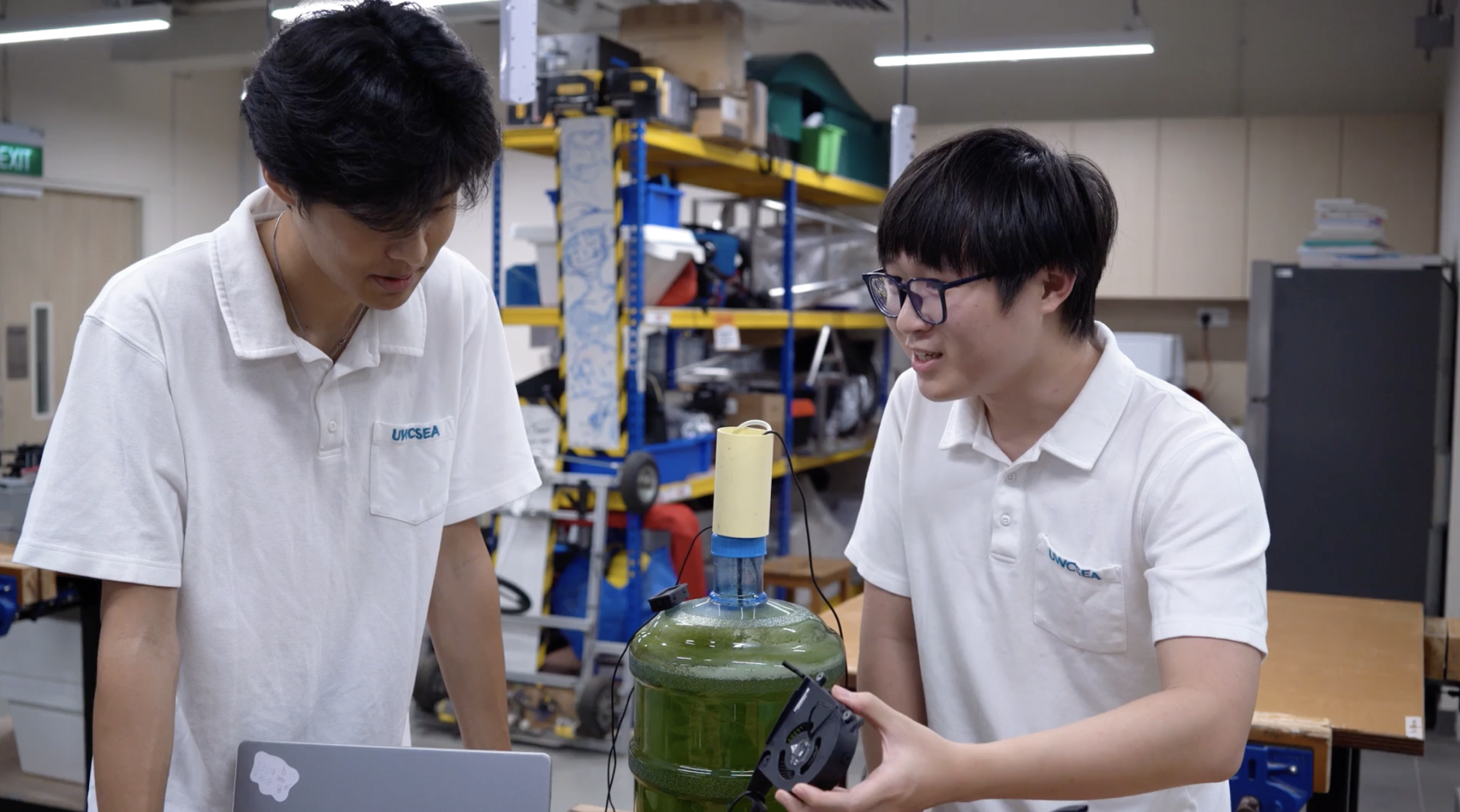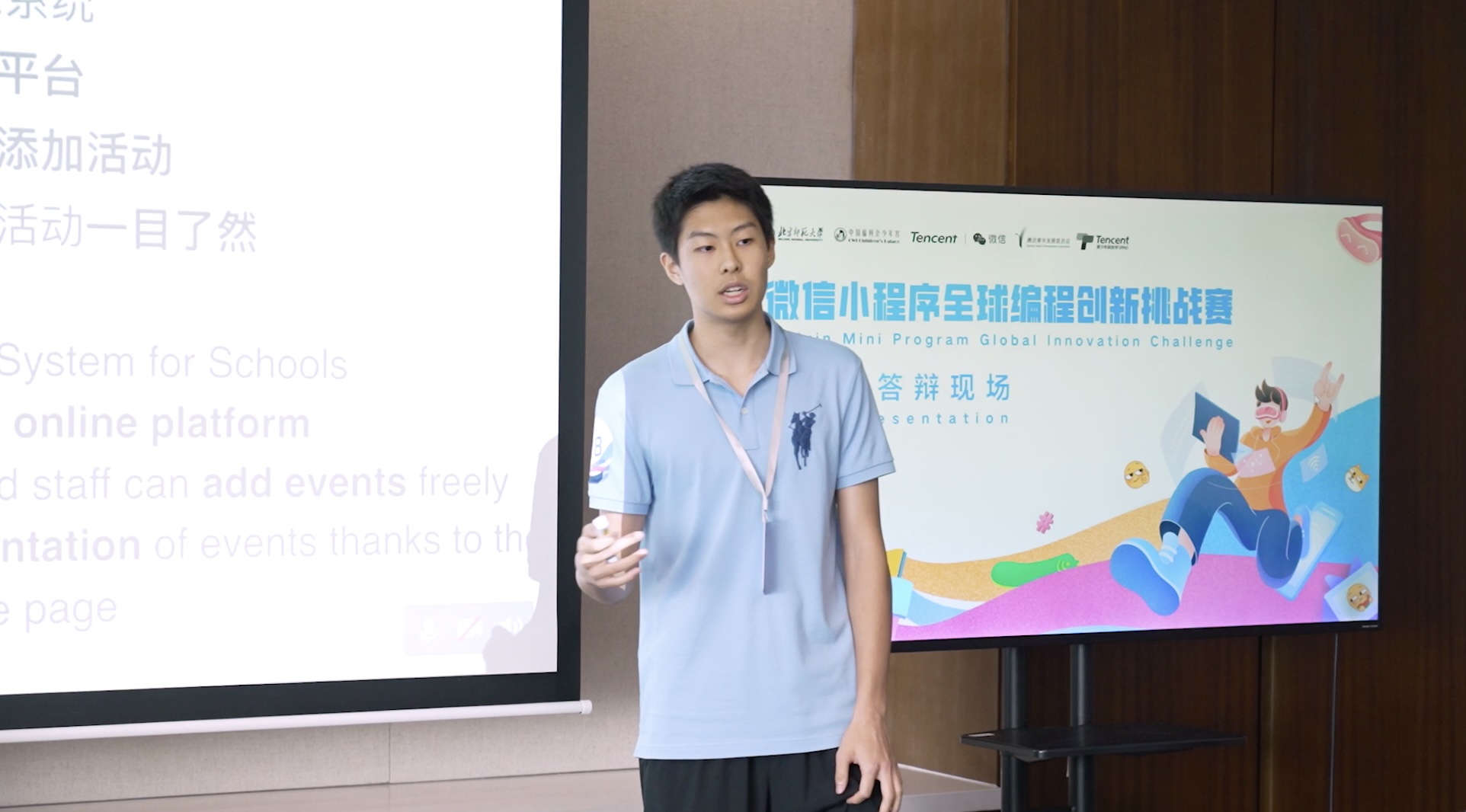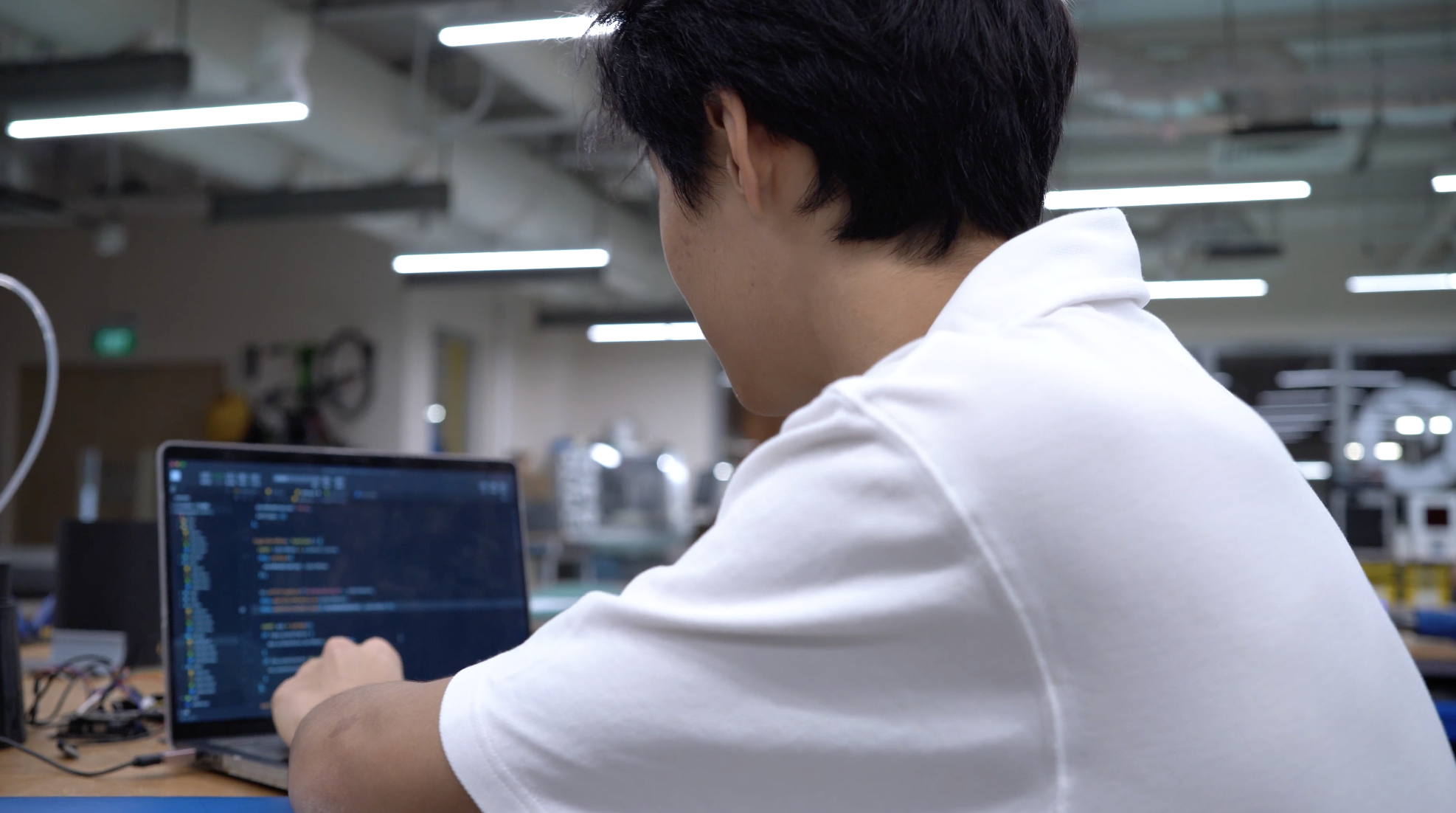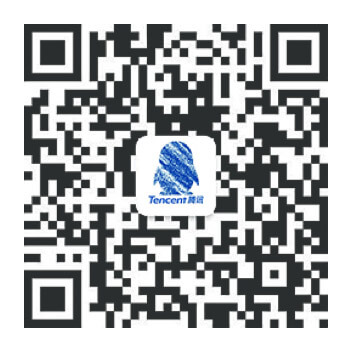Bright Young Students Tackle Real-World Problems using Weixin Mini Programs
Justin and Hanson, both 17, were filled with anticipation after weeks of perseverance, problem-solving, and teamwork. They had built an AI-powered air purifier and were about to turn it on for the first time. Fortunately for them, Algeair, as the prototype was known, flickered to life.
The air purifier wasn’t some school project – it was Justin and Hanson’s contribution to the Weixin Mini Program Global Innovation Challenge, which is held annually by Tencent. For Matthew Weaver, Head of Innovation at UWCSEA and the students’ mentor, Algeair is a great example of what young people can accomplish when they are inspired. “The Challenge encourages students to look outward, think critically, and test ideas in the real world,” he said. “That’s the power of innovation — when they start to see what they’re capable of.”
 Justin and Hanson test their air purifier, built for the Weixin Mini Program Challenge.
Justin and Hanson test their air purifier, built for the Weixin Mini Program Challenge.
Now in its third year, the Challenge invites students around the world to turn bold ideas into practical solutions using the Weixin Mini Program platform. To date, it has reached over 2,000 schools across more than 10 countries, resulting in more than 130,000 student-created Mini Programs. Students can use the development tools offered by Weixin to design their own Mini Programs to address real-world problems. More than a tech competition, it’s a space where students take the lead and bring ideas to life.
Returning with Purpose
For Hanson, the Challenge was already familiar. He joined last year, too, creating a scheduling Mini Program that brought together scattered information -- like school events, class timetables, and extracurricular activities -- into one place.
“Last year was such a great experience,” he said. “We got to create something useful, meet global teams, and see new technology in action.”
 Hanson presents his Mini Program at last year’s finals at Tencent Headquarters.
Hanson presents his Mini Program at last year’s finals at Tencent Headquarters.
That experience sparked his passion and inspired him to return — this time with Justin as his teammate. Their new project was again rooted in personal experience. Justin recalled days when the air quality was so poor that he couldn’t go to school. That sparked a question: Could they build a low-cost, eco-friendly purifier that anyone could use?
A Platform with Impact
Throughout the process, Weaver guided the students. He doesn’t see his role as a traditional teacher, but as a facilitator of curiosity.
 Matthew Weaver tries out a smartwear device with students at last year’s Weixin Mini Program Innovation Challenge.
Matthew Weaver tries out a smartwear device with students at last year’s Weixin Mini Program Innovation Challenge.
“What makes the Weixin Mini Program Innovation Challenge so powerful,” said Weaver, “is that it gives students access to a real ecosystem. They’re not designing for the classroom. They’re building for the world.”
Rather than offering direct solutions, he encourages students to explore. “I ask questions, offer feedback, and give them the space to discover the answers themselves.”
 Matthew Weaver explains real-time air quality tracking to students using on-screen data.
Matthew Weaver explains real-time air quality tracking to students using on-screen data.
Growth Through Challenge
The Algeair prototype uses algae to purify the air, combining a physical purifier with a Mini Program interface. By using the Mini Program, users can monitor real-time air quality, track purifier performance, and interact with AI agents that act as virtual air pollution experts.
The journey wasn’t always smooth. The students faced many challenges — from cracked 3D prints and failed algae growth to bugs in their Mini Program code. “It was a lot of trial and error,” said Hanson, who led the software development. “But the process taught us not just technical skills. It showed us how to keep going when things don’t work.”
Hanson also taught himself how to build on a cloud-based platform for the first time. “Seeing the real-time air quality data appear on screen after all that effort was a breakthrough moment for me.”
 Hanson codes the Mini Program that connects to the air purifier.
Hanson codes the Mini Program that connects to the air purifier.
A Learning Journey Beyond the Classroom
Weaver said the most meaningful moments have nothing to do with awards. “It’s not about winning a prize. It’s when they debug a line of code after days of frustration, or see the prototype finally come together. That’s where the learning happens.”
He also believes real-world platforms like Weixin are key to student growth. “Students know when something is authentic. This isn’t a classroom assignment — it’s something people could actually use. That changes how seriously they take it.”


